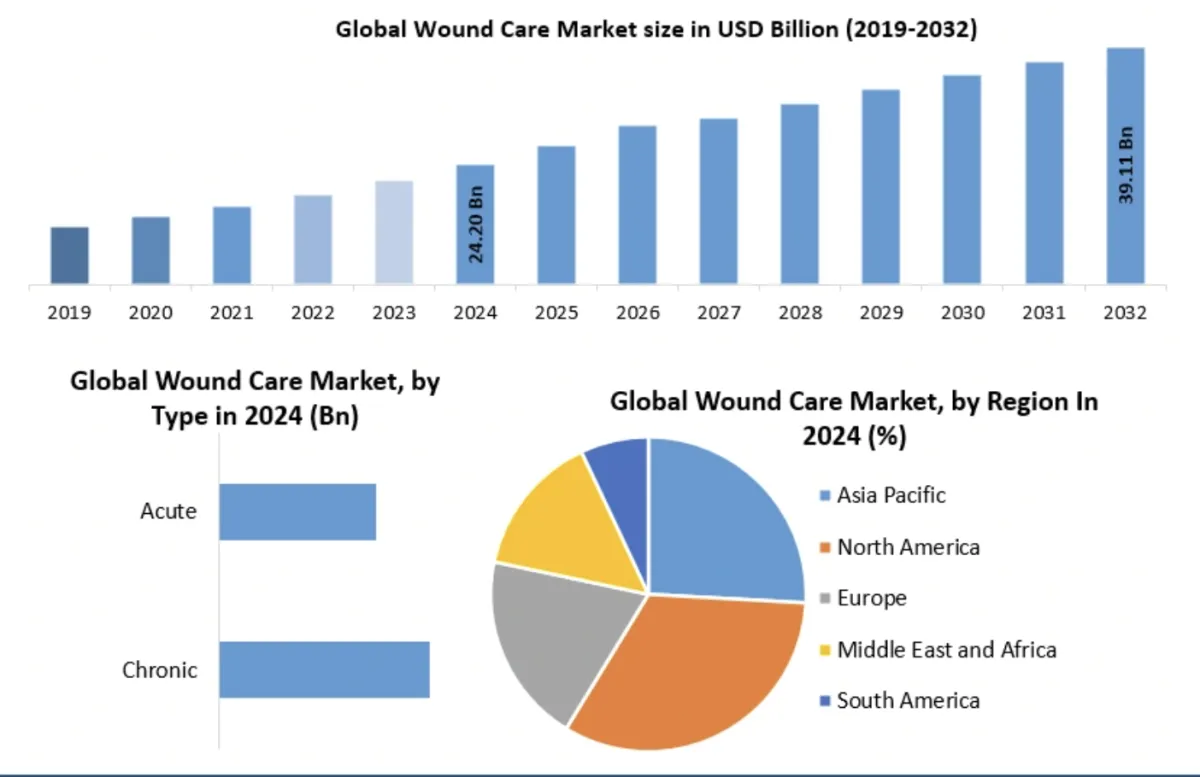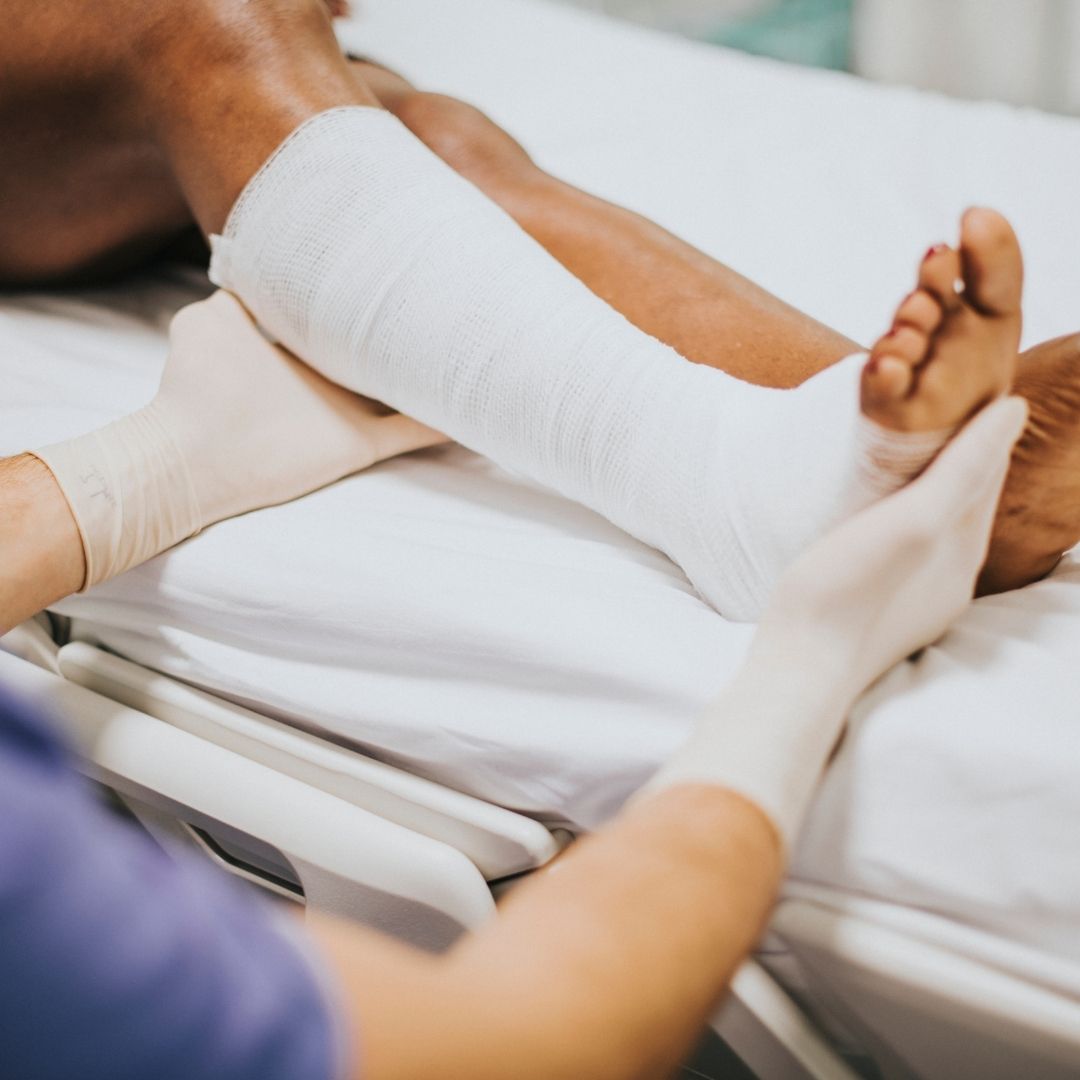
Royal Wound Care: Among the nation’s few board-certified wound care clinics
From initial wound diagnosis through resolution, Royal Wound Care provides the highest level of wound management throughout the skilled nursing facilities we serve. Providers in all locations are trained extensively on evidence-based clinical guidelines, with wound care nurses and specialty physicians medically following the patient during transitions of care.
For questions regarding our skilled nursing facilities, please book an appt here.
We improve patients’ lives through research.
Since our founding, Royal Wound Care has made optimal wound care accessible to all by combining cutting-edge research with a highly trained, board-certified staff. We’ve published peer-reviewed articles, shared expert-led webinars, and partnered with leading academic and advocacy organizations to advance the field of wound healing. Click the link below to explore the latest in wound care news and access insights drawn from our extensive clinical experience.
Through wound science and research, we are helping to heal more wounds.

More Data, More Knowledge
The more we examine wounds, the better we understand how ulcers develop and progress into more serious wounds.
Partnerships for Increased Insight
By collaborating with academic and scientific experts, we integrate external research with our clinical insights to better understand what makes certain treatments effective—and why others fall short.
Working Toward Wound Prevention
While modern wound care has helped millions heal, our ultimate goal is to one day predict and prevent ulcers before they develop into chronic wounds.
The latest in wound care.
In a recent update from Royal Wound Care , our medical team highlights concerning trends in major limb amputations, noting a significant increase during the COVID-19 pandemic compared to pre-pandemic periods. These findings emphasize the critical need for early intervention, consistent wound care, and ongoing patient education—especially during times of healthcare disruption.

How to Treat Venous Ulcers and Leg Swelling Effectively
How to Treat Venous Ulcers and Leg Swelling Effectively
Open sores and ulcers can occur in different areas of the body—from pressure points to the lower legs. And, oftentimes, these injuries can develop into chronic wounds, becoming hard to treat and slow to heal.
Venous ulcers, in particular, are among the most common types of chronic wounds, which can significantly impact quality of life. With appropriate wound care, healing typically occurs over several weeks to months. Without effective management, venous ulcers and associated leg swelling can persist for years—sometimes even becoming a life-long concern.
This post serves as a complete, patient-focused guide on how to treat venous leg ulcers and leg swelling. Whether you’re managing chronic wounds yourself or are a clinician in a skilled SNF, proper education is essential for optimal recovery.

How to Treat Venous Ulcers and Leg Swelling Effectively
While venous ulcers are among the most common types of wounds, many people are unaware of the proper treatment. More specifically, many patients don’t know that it’s a condition that requires professional treatment to begin with.
At Royal Wound Care, we strive to simplify care through advanced clinical modalities, compliance standards, and, most importantly, thorough training and support. Therefore, we will explain what venous ulcers are, their causes, and effective treatment methods.
Before starting, it’s important to note that while tedious, recovery is achievable. Each proper technique and sustained effort is a step closer to healthier, stronger legs.
What Is a Venous Ulcer?
A venous ulcer is an open sore that forms due to a disruption in blood flow. While not every venous ulcer is considered a chronic wound, these injuries normally fail to progress through the average stages of recovery. Whether due to an underlying cause or a poor environment, venous ulcers typically exceed the ideal healing time of 4–8 weeks.
The development of venous ulcers can often be complex, with multiple contributing factors—which we will discuss below. Overall, increased venous pressure damages the valves, preventing blood from flowing properly to the heart and, instead, causing blood to pool in the lower legs.
As a result, fluids and proteins begin to leak into the surrounding tissue, causing further buildup and pressure. Over time, this leads to leg swelling, skin damage, and a lack of oxygen and nutrient supply to the wound.

What Causes Venous Ulcers?
While venous ulcers are ultimately caused by chronic venous hypertension, various factors can contribute to their formation and progression. Some of the causes of venous ulcers include:
Chronic Venous Insufficiency
Chronic venous insufficiency (CVI) is the most common cause of venous ulcers. When the valves in the veins don’t work properly, blood pools in the lower limbs rather than flowing back to the heart. This increased venous pressure damages the skin, leading to ulcer formation.
Related: Vascular Disease and Wound Healing
Varicose Veins
Varicose veins are another common cause of venous ulcers. While varicose veins range in size, enlarged, twisted, or bulging veins cause valves to weaken or fail, causing blood to flow backwards. As a result, this condition increases venous hypertension, making it harder for patients to maintain proper circulation.
Inactivity and Obesity
Limited mobility and additional weight are both common causes of venous insufficiency. As for obesity, the increased pressure disrupts blood flow and raises pressure within the legs. Additionally, limited mobility weakens the calf muscle, reducing blood circulation and causing blood to pool within the legs.
Diabetes and Edema
When it comes to diabetes and wound care, many individuals tend to deal with diabetic ulcers. However, when accompanied with edema, this persistent swelling can stretch the skin, making it more likely to break down. Without proper attention, the combination of swelling, skin stress, and impaired circulation can lead to the development of venous ulcers.
Related: Edema and Diabetes and Slow Healing Wounds: Understanding Care
High Blood Pressure
High blood pressure can worsen venous stress, damaging valves and prohibiting proper blood flow. The increased pressure encourages fluid to leak into surrounding tissues, causing inflammation that can eventually contribute to the development of venous ulcers.
Where Are Venous Ulcers Located?
As we mentioned above, venous ulcers can essentially occur anywhere on the body. However, these wounds are predominantly seen on the inner part of the lower legs, right above the ankle. This area is also known as the gaiter region.
Due to gravity, blood faces greater resistance as it returns from the ankles—an area that naturally experiences the highest venous pressure in the lower legs. As a result, ulcers on the lower legs are also often accompanied by swelling, discoloration, and a feeling of heaviness. Some patients may also experience pain, itching, or burning.
What Does a Venous Ulcer Look Like?
A venous ulcer typically shows up as dryness, itchiness, redness, and/or swelling. Because these symptoms are so common, many patients mistakenly self-diagnose them as a common rash.
However, as the condition progresses, individuals may notice the formation of a small, shallow wound. This is generally accompanied by discoloration (reddish-brown skin) due to the pooling of blood. Aside from this, patients may experience thickening of the skin (lipodermatosclerosis) due to venous hypertension.
Chronic venous damage can interfere with growth factors essential for healing. Because of this, it’s essential for both patients and nurses to recognize signs of infection. Symptoms include: drainage, a foul odor, bleeding, shiny and tight skin, or increased redness, warmth, and swelling.

How to Heal a Venous Ulcer with Leg Swelling
Compression Therapy
Compression therapy is the cornerstone of venous ulcer management. Patients can wear compression stockings or utilize compression bandages (also known as Unna Boots) to reduce swelling and pressure. As a result, both blood flow and lymphatic flow improve, allowing oxygen and nutrients to reach the wound bed.
Related: How Long Does It Take for a Wound to Heal?
Leg Elevation
As we mentioned earlier, the bottom of the legs are naturally impacted by gravity. To combat this, leg elevation helps encourage blood to flow back to the heart, reducing swelling and improving circulation. For optimal healing, patients should raise their legs above heart level multiple times a day for at least 30 minutes.
Manage Underlying Conditions
For a venous ulcer to heal faster, it’s crucial to manage any contributing underlying conditions. For example, controlling blood pressure, diabetes, and improving mobility helps maintain proper blood flow and encourages granulation tissue formation.
Monitor Hydration and Nutrition
Above all, proper hydration and a balanced diet are essential for helping heal venous ulcers. Consider both factors as the building blocks for recovery, as they support tissue repair, circulation, and the reduction of inflammation. Otherwise, malnutrition may inhibit recovery and increase the risk of complications, such as improper wound closure and severe infection.
Related: Nutrition and Wound Healing: Expert Strategies
Proper Wound Care
When it comes to helping a venous ulcer heal, proper wound management can make all the difference in recovery timelines. At Royal Wound Care, we offer cutting-edge therapies to assist patients in faster healing and better outcomes.
Through doing so, we prioritize the restoration of tissue health and improvement of overall quality of life. Although, in certain cases, general attention may not be enough. Some patients may require skin grafts or hyperbaric oxygen therapy, both treatments that Royal Wound Care offers.
If you or a loved one is managing a venous ulcer, contact us today to learn how we can support optimal recovery.
Related: Advanced Wound Treatments
Prevent Recurrence
Even after a venous ulcer has healed, it’s essential to implement lifestyle changes to prevent recurrence. Wear compression stockings daily, maintain a healthy diet, and incorporate physical activity as often as possible. Additionally, even adequate hydration and regular leg exercises can make a world of difference in prevention.
Effectively heal venous ulcers and leg swelling with Royal Wound Care.
Venous ulcers are among the most common (and stubborn) types of chronic wounds. However, with effective treatment, consistent dedication, and prompt attention, recovery is absolutely possible. By learning causes, location, and identifying factors, both patients and nurses can take informed steps to promote healing and prevent complications.
Healing doesn’t have to be a long, complicated process—especially not when you have an expert, patient-focused team supporting you. At Royal Wound Care, we offer in-clinic wound care, home health care, and mobile wound care to provide treatment that fits each patient’s lifestyle.
Additionally, for SNF or independent nurses, we offer advanced education opportunities and professional partnerships to transform the delivery of care. Reach out today to discover how you can reduce infection rates and wound-related hospitalizations while enhancing patient outcomes. Together, we can reset the standard in healing excellence.
WEST HILLS
7230 Medical Center Dr. Suite 100
West Hills, CA 91307
(818)–660–2977
BEVERLY HILLS
9735 Wilshare Blvd #210B
Beverly Hills, CA 90212
(818)–660–2977
If you are interested in making an appointment, please click here to find a Wound Care Center near you.
Request an Appointment at a Royal Wound Care Facility near you.
Royal Wound Care is the expert in wound healing. Our board-certified wound care specialists are ready to help you begin your healing journey. Click the button below to request an appointment at a Wound Care Center near you—no referral needed
© 2025 Royal Wound Care, LLC. All rights reserved.
site by Growth Partners Marketing
